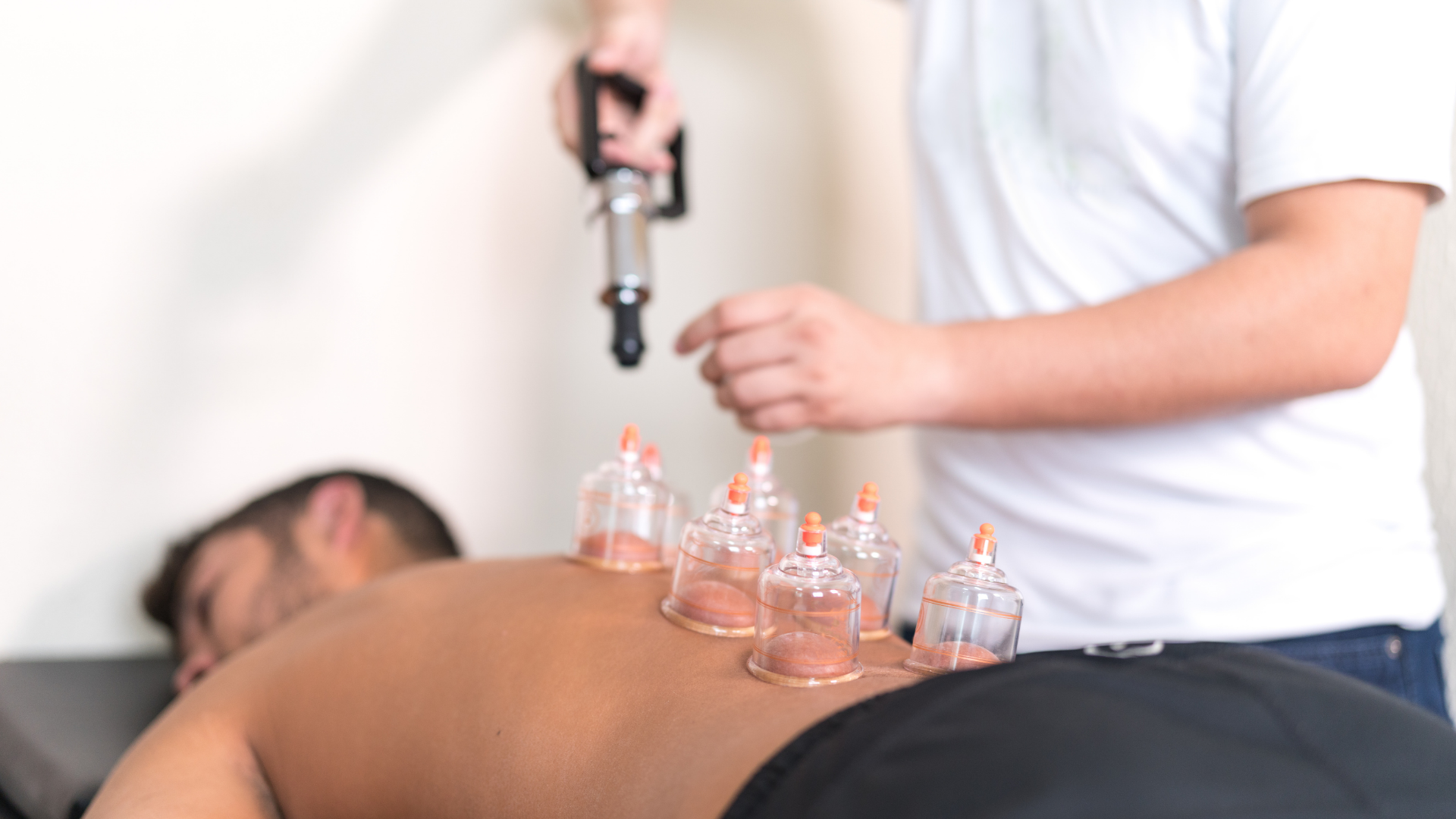Cupping Therapy: An Alternative Pain Reliever

For occasional pain, healing from an injury, and even chronic pain, the ancient method of cupping therapy for pain relief is a promising alternative and natural solution. Especially with cases of chronic pain, it may start to feel maddening the amount of pain relieving pills you are taking just to feel comfortable.
With this article, learn why cupping therapy might be the right alternative therapy for you to add to your pain management and treatment. As well, stay informed about the risks of cupping therapy and when to avoid it.
What is Cupping Therapy?
Cupping therapy is usually associated with Traditional Chinese Medicine but is documented throughout many cultures. The practice serves on the idea that stagnation in the body (whether it be physical or energetic) is the cause of pain in the body, and to get rid of the pain or heal you must create flow again.
Cups are heated and then placed along the body in conjunction with the meridian, which will target specific energy, organs, muscles and even emotions. This suctioning force gets your energy flowing and promotes blood circulation.
These cups are commonly made out of:
- Glass
- Ceramic
- Bamboo
- Plastic
- Silicon
Depending on the desired treatment, practitioners sometimes implement different techniques to achieve their results. This includes methods such as cups soaked in traditional medicine herbs before being placed on the skin, flash cupping which involves placing and removing cups quickly around the skin, or making use of oils to slide the cups along the meridians.
Cupping Therapy for Pain Relief
When treating pain with cupping therapy, you can consider it like a reverse massage. The suctioning force of the cups on your body relieves pressure from the muscles rather than applying it. Even reaching deep into the body’s tissues.
Treatment with cupping therapy as a complementary therapy to regular pain management shows positive results worldwide by the many who practice and receive cupping.
What Kind of Pain Can Cupping Therapy Treat?
Some say any pain caused by stagnation in the body has a treatment. Cupping therapy can help relieve pains in the back, neck, and shoulder by placing multiple cups in these areas. However, it is not limited to that.
Arthritis
Although it may be difficult to reach some focal points of arthritis pain with cupping, cups can go in places nearby to promote adequate blood circulation. In turn, reducing the inflammation of arthritis and improving mobility of the joints.
Carpal Tunnel
Cupping therapy for carpal tunnel is a substantial complementary option to your regular treatment. Similar to how cupping helps arthritis, the improved circulation aids in relieving pressure from the median nerve, and removes some discomfort from the wrist.
Headaches
To treat headaches with cupping therapy, cups are placed along the neck, forehead, and temples. This will loosen strained muscles and open constricted vessels for proper blood flow. Before placing cups on your face, remember the marks stay a few days!
After your Session
It is very important to hydrate after your cupping session. Now that your body fluids are flowing, adequate consumption of water is going to help wash out toxins and waste through the lymphatic system.
Avoid stimulating foods such as caffeine and sugar. As well, extreme climate changes between hot and cold. Try to keep your body regulated in this state of healing.
Other Benefits
Aside from pain relief, there are claims of cupping therapy creating improvement in other areas of the body as well.
People with hypertension and low blood pressure may benefit from cupping therapy from the improved flow of blood circulation around the body. The same applies for treatment of asthma, coughs, and other breathing complications – however it is the flow of lymph to remove pathogens and break up congestion.
There are also some who say cupping is a hopeful remedy to skin conditions such as acne, eczema, and shingles. This goes off the knowledge that blood circulation heals cells. However, some practitioners list skin conditions as a contraindication to cupping incase of adverse reactions.
Risks and Contraindications
Not all alternative therapies are for everyone. If you are considering incorporating cupping therapy into your routine for pain management, there are a few things to consider.
- Cups can cause bruises, burns, skin discoloration, scars or infection.
- Let your practitioner know if you are experiencing dizziness.
- Cupping may not be for you if you are living with a bleeding disorder, prone to blood clots or are taking blooding thinning medications.
For the best experience, seek out a reputable practitioner.
Summary
The remedy that is cupping therapy has proven its grounds as a significantly positive route for pain management. Cupping is most beneficial when used integratively with other alternative treatments such as acupuncture or massage. If you think cupping is right for you, we encourage you to further your research and talk to a few practitioners before your first experience.


Leave a Reply
You must be logged in to post a comment.